Shaving and the products associated with the process have been around for as long as there have been beards. As with all customs that last, some aspects (as well as some beards) have remained the same and others have undergone transformations down through the centuries.
The modern influx of new and improved products infused with advances of technology, particularly the fragranced personal care products produced by our master perfumers at Alpha Aromatics, promise a superior wet shaving experience to the shavers of today.
A Brief History of Shaving Cream
Believe it or not, shaving cream has had an illustrious past, dating back 4,000 years to the earliest record of its use in Mesopotamia. The Sumerians created primitive soaps using wood ash and animal fats, which were applied to beards before shaving.
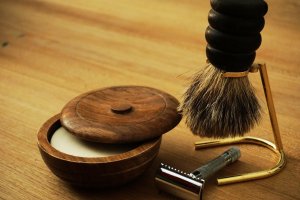
The frescoes of ancient Egypt depicted an advanced culture that considered shaving a daily ritual of life.
Beards were divine gifts from the gods, and fake ones were often donned by both male and female pharaohs for certain ceremonies.
They used lubricants that were gleaned from animal fats and oils for use in razors that were made of bronze.
There were no variations in shaving creams for hundreds of years, and soaps were the standard means to develop thick lathers on beards until they fell out of favor in the 1700s.
Men and women began shaving their heads to fit under powdered wigs, and modern shaving tools, such as the badger hair brush (a small brush with a handle used to make lather from shaving soap or shaving cream), became popular.
In the early 19th century, soaps designed specifically for shaving were developed in England, and “barbershop traditions” sprouted and took root.
While the 1900s brought about tremendous innovations in shaving creams, in the 1940s, due to war time rationing, they took a step backward that demanded a return to the ways of old; namely, lubrication without lathering.

In 1949, aerosol spray cans were introduced and they were favored for their convenience even though they were more expensive than traditional soaps and creams.
By the late 1960s, 65% of all shaving preparation products were aerosol cans, but in the 70s and 80s, dry skin, razor burn and a growing concern for the environment’s ozone layer propelled public sentiment to return to old-fashioned wet shaving.
Today, the many advancements in modern science have created products that combine the best of both worlds; namely, a respect for the classics of the past and the development of wet shaving products that combine quality with efficiency.
What Are The Different Types of Shaving Products?
The many diverse products associated with the art of wet shaving all serve a particular purpose, and the following clarifications will hopefully make things less confusing. They include shaving creams, pre and after-shave oils, shaving soaps, gels and foams, beard creams, balms, oils and wax.
Pre-Shave Oil
A pre-shave oil helps to hydrate and protect the skin before shaving, and its effects can be compared to driving a motor vehicle without oil. A nutrient-rich pre-shave oil can prevent nasty razor burn and serve as both a disinfectant and anti-inflammatory agent.
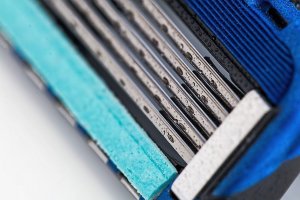
Shaving Creams
Shaving creams allow for the softening of pores, and their main function is lubrication. They can be applied with either a shaving brush or fingers. The brush has the added advantage of producing a warm lather, which further lifts the beard off the face and gently exfoliates the skin.
Superficially, it may seem that cream application is identical in purpose to pre-shave oil, but it isn’t. The two steps penetrate the skin at different levels and prepare the face for diverse aspects of the process. Specifically, pre-shave oil nourishes and deeply penetrates pores and hair follicles while shaving cream conditions the face and beard so that razor action will flow easier.
After-Shave Oils
Originally developed as an alcohol-based antiseptic for disinfecting the inevitable nicks and cuts that arise from the shaving process, its alcoholic content often dried out the skin. Modern after-shave products soothe freshly shaved skin with calming, restorative oils that absorb quickly into pores and moisturize “injured” skin. They serve as healing and rejuvenating serums.
Shaving Soaps
Shaving soaps have been around since the 14th century, and their divergence from shaving creams concerns the time and effort invested in achieving a good lather. Creams are easier to apply because they contain water, but their over-all effect doesn’t last as long. The fundamental purpose of soap is to act as a lubricant between skin and that sharp razor blade, which when combined with water, softens the hair.
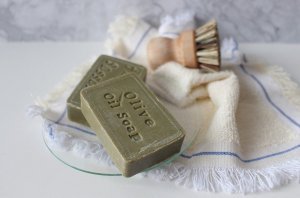
The advantage of soap is its cost per shave, as it lasts longer and is therefore cheaper. Shaving soaps are known for their impressive product life, as they can last several months even after daily use. They exemplify an iconic grooming essential for men that has fallen out of favor, albeit they are much more effective than canned shaving gels or creams.
For those men who savor the more traditional wet-shaving experience, which entails more control over lather creation and a smooth razor flow, shaving soaps are the answer.
Beard Creams, Oils, Balms And Wax
Beard creams and beard oils serve as moisturizers for the skin and the hair from the follicle out, and at the same time, soften the hair and prevent the formation of a dry flaky skin condition known as “beardruff (beard dandruff). Both products are effective in maintaining a more manageable, soft and pleasant-smelling beard, often infused with fragrances developed in our Pittsburgh laboratories by our master perfumers.

Beard cream is an alternative to oil for those who prefer a matte finish to a shiny one. Beard oils will soften and relax the beard and condition the skin. They do tend to moisturize better and longer than most creams although the latter can also have the same effect when applied several times throughout the day.
Beard Balm is used primarily to soften hair, hydrate skin, eliminate itch, tame fly away strands and promote healthy growth. Conditioning, rather than styling is its main function. The main ingredient in beard balm is shea or cocoa butter, which allows spreadability.
Both the balm and wax can be effectively used together, but it is recommended that the balm be applied first. This will both strengthen the hair and condition the skin. Wax has a thicker feel and helps to render a well groomed and stylish look.
Gels And Foams
Gels are listed last because they are the least of all the products out there to be considered for a pleasant shaving experience. This is because they often contain synthetic colors and dyes, preservatives, and alcohol, all of which make the shave very uncomfortable and leave the skin highly susceptible to razor burn.
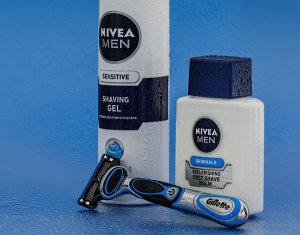
They also often contain numbing agents that can exacerbate cuts, nicks, and irritations. Some foams and gels also contain toxic gases, such as isobutane or propane, which is their foaming agent. Canned and gel ingredients generate a cold lather, which closes the pores and stiffens the beard, which makes it more difficult to manage, and collectively culminates in an uncomfortable shaving misadventure.
The Importance Of Natural Ingredients In Shaving Products
Natural ingredients are biodegradable and work in tandem with the body’s functions and cycles. This cannot be said of synthetic compounds, such as: chemical dyes, sodium lauryl sulfate; detergents, such as: TEA, DEA MEA and petrochemical byproducts, such as paraffin, mineral oil, and petrolatum.
Shaving products containing natural essential oils are the best choice for wet shaves because they evaporate upon contact with the skin. The essential oils used in shaving creams and soaps are concentrated extractions from plants, roots, fruits or flowers are the foundation of the many fragrances we develop for our diverse clients who manufacture personal care products.

Explore our guide to the essential oils most used in each note of fragrances.
Some of these include: creamy and woody sandalwood; floral, complex bergamot; sharp lime; rich, soothing lavender; musky, spicy rose; exotic, milky coconut; fresh, slightly smoky cypress; warm, woody, dry cedar wood; pungent, sharp and green eucalyptus; minty, cool peppermint; fresh, leafy avocado; sour sweet lemon; bittersweet almond and slightly nutty jojoba. Those shavers with sensitive skin should consider shaving cream selections that contain aloe vera.
The Shaving Experience And Related Products for Women
As is the case with most issues involving both sexes, the shaving experience for women is different, albeit some of the product types are basically the same. For example, pre-shave oil and shaving cream are pre-requisites just as they are with men. Differences lie in sites of application (legs and arms vs. face), preferred shaving locations and preferences for feminine fragrances.

Women usually prefer bathtub or showers, while men tend to stand over sinks. They are also more into exfoliation via a body scrub or facial exfoliator on legs, underarms and bikini areas, which remove dead skin and release trapped hairs for an optimal shave. Fragrances are usually chosen by skin type or personal preference.
For sensitive skins, which are prone to razor burn and soreness, scentless lavender and rose oils work well; fresh lemon, lime and bergamot oils benefit skins susceptible to cuts and nicks. For shavers with skin that often breaks out, cedar wood, peppermint and sandalwood are nurturing and cleansing.
Women And Safety Razors
Believe it or not, women were using safety razors until the 1950s, at which time manufacturers discovered plastic. This material meant they could produce razors more quickly and cheaply, and they were very profitable, since they had to be replaced often. Destructive to the environment, they became common eyesores in landfills all across the country. Brands and advertisers barraged women with the message that the more blades, the better.
Women’s skin needs a bit more care and attention than men’s, and is more sensitive. Obviously, a woman’s razor navigates more and different curves. Not all safety razors are designed equally, and even today many are made with men in mind and for use on coarse, thick hair on a straight surface.
Fragrance Supply For Shaving Product Manufacturers
The following are examples of a few fine shaving cream scents produced for men and women by our chemists and researchers at Alpha Aromatics in the Pittsburgh laboratories of our expansive 85,000-square-foot Technology Center, which is equipped with the finest tools available within the world of industrial science. These include: gas chromatography, mass spectrometry, head-space analysis, distillation, extraction and quality control technology.
Fragrances For Women’s Shaving Products
White Lily and Grapefruit
The scent opens with a burst of tart, tangy and uplifting grapefruit, sour sweet lemon and juicy pineapple. This top note soon gives way to a heart note comprised of delicate, floral, waxy and feminine lily-of-the-valley, fresh and sweetish orange blossom and intoxicating, creamy gardenia. A musky, woody base note completes this fragrance.
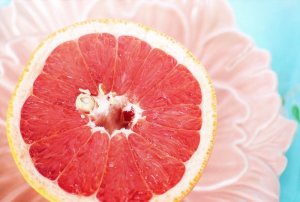
Apple Blossom
A top note marked by the fruity and oily waxy nuance of crisp apple, velvety, aromatic peach and fuzzy, soft and rich apricot evaporates into a delightful middle note of warm, ethereal and floral apple blossom, haunting jasmine and bright, tropical lily.
The scent finishes with a rich, honey-like amber, sensual, woody cedar and a slightly sweet and earthy sugary nectar base note.
Ivy Blossom Amber
Opening with a top note tinged with intensely exotic, fragrant and milky coconut, astringent lemon and juicy, woody, green apple, these elements soon morph into a middle note hallmarked by creamy, sweet and slightly citrusy magnolia, romantic rose and herbal, fresh and green ivy blossom.
Creamy sandalwood, sensual musk, elegant and sweet vanilla and warm, earthy amber complete this scent.
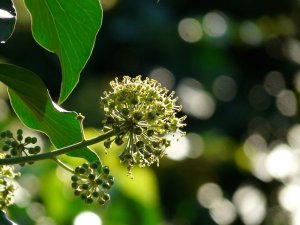
Fragrances For Men’s Shaving Products
Teakwood Tobacco
Bitter grapefruit, succulent, luscious orange and fresh, watery aquatic nuances comprise the opening notes of this fragrance.
These elements soon surrender to a heart note of warm, sweet clove and rich, spicy ginger.
A base note of honeyed amber, earthy musk, light teakwood and somewhat sweet, woody and mossy tobacco finishes the scent.
Bay Leaf & Bergamot
Spicy, floral, bitter and complex bergamot, invigorating lemon and fresh, juicy, sweet orange peel form the top notes of this pleasing fragrance.
A middle note of herbal and slightly floral bay leaf, piquant camphor and minty, pine, slightly honeyed eucalyptus follows, soon to be supplanted by a finishing base note of earthy cedar, sensual musk and creamy sandalwood.
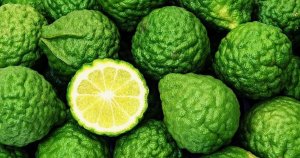
Cool Mint And Citron
Sour-sweet lemon, refreshing, light and spicy bergamot, succulent orange and fruity, green pear are the top notes of this scent.
They soon fall away to a middle note of pungent, sharp and green eucalyptus and minty, cool and fresh peppermint.
The scent finishes with a base note of bittersweet almonds, aromatic cherrywood and sensual white musk.
In Conclusion
If you are a personal product manufacturer seeking to develop new and exciting fragrances for shaving cream and other related products, contact our team today.
Our choices are vast and cost-effective and our services superior to any within the modern perfume industry — +1-412-252-1012.
Final thought on shaving cream: A good lather is half the shave- William Hone
Photo Credits: Pixabay and Getty Images
 alpha aromatics®
alpha aromatics®